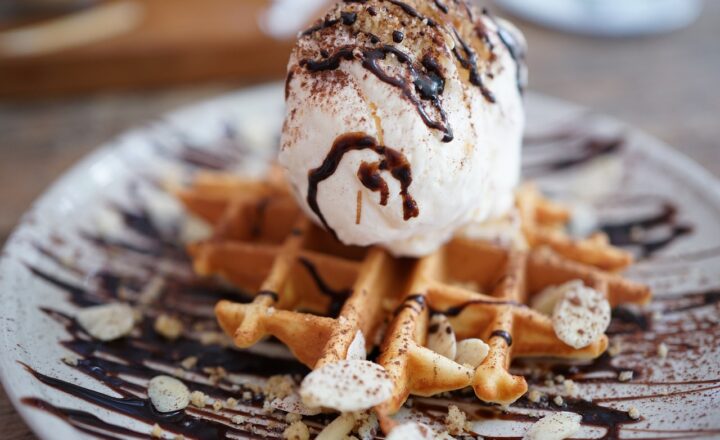The Art of Ice Cream Tasting: How to Identify Flavors Like a True Connoisseur
November 17, 2024

Ice cream is more than just a delicious frozen treat; it’s an art form that allows for endless creativity and flavor exploration. For many, indulging in ice cream is a simple pleasure, but for the discerning palate, it evolves into a tasting experience similar to wine tasting. Learning the nuances of flavor, texture, and aroma can transform the way you experience this delightful dessert. In this article, we will delve into the world of ice cream tasting, exploring how to identify flavors like a true connoisseur.
1. Understanding the Basics of Ice Cream
Before we dive into tasting techniques, it’s essential to understand what makes ice cream unique. Ice cream is composed of a few key ingredients: cream, sugar, milk, and stabilizers. The combination of these elements influences not just flavor but also texture and overall enjoyment.
Knowing the basics of ice cream can help you appreciate its complexities. Here are a few things to consider:
- Base Ingredients: Different bases yield different flavors. Creamy, high-fat ice creams often have a rich flavor, while lighter ice creams may lack depth.
- Addition of Flavors: Artificial flavorings and natural additives can significantly alter taste profiles.
- Churning Method: Over-churning can create an airy texture, while under-churning can lead to a denser experience.
Understanding these aspects can enhance your overall tasting experience, allowing you to identify subtle flavor differences.
2. Preparing for the Tasting Experience
A successful ice cream tasting requires more than just scooping up a cone. Here are some steps to prepare for the experience:
- Choose a Variety: Select a range of flavors — from classics like vanilla and chocolate to more adventurous options like lavender or matcha. Having a mix will stimulate your senses.
- Gather Tools: Equip yourself with tasting spoons, small bowls, and towels for easy cleanup. Having a glass of water or palate cleansers like unsalted crackers can also help refresh your taste buds between samples.
- Consider the Environment: Conduct your tasting in a neutral environment where distractions are minimal. This approach allows for an immersive experience.
Being prepared not only sets the mood but also enhances your ability to focus on flavor distinctions.
3. The Ice Cream Tasting Process
Once you have your variety of ice creams and tools ready, it’s time to engage in the tasting process. Here’s a step-by-step guide:
1. **Scoop Wisely**: Use a clean spoon for each flavor to avoid contamination. Take a small, manageable scoop.
2. **Observe the Appearance**: Examine the visual aspects of the ice cream. Look for vibrant colors, chunks of ingredients, or smoothness. Appreciate the aesthetics of your dessert before diving in.
3. **Take a Whiff**: Before tasting, breathe in the aroma. Scent plays a crucial role in flavor perception. Identify notes of vanilla, fruit, or any other ingredient.
4. **Taste Mindfully**: Place a small amount on your tongue and let it melt. Pay attention to the initial taste and the aftertaste — each can reveal different aspects of flavor.
– **Texture**: Is it creamy, gritty, or cold? Texture impacts the overall experience.
– **Flavor Development**: Notice how flavors evolve as the ice cream warms in your mouth.
– **Balance**: Consider whether the flavor is well-rounded or if it skews too sweet, salty, or bitter.
5. **Cleanse Your Palate**: After tasting a flavor, take a sip of water or eat a cracker to cleanse your palate before moving on to the next.
By following these steps, you’ll develop skills that will allow you to identify unique flavor profiles effectively.
4. Identifying Flavor Profiles
As you taste, you’ll want to identify the flavor notes present in each scoop. Here’s how:
- Primary Flavor: What is the most dominant taste? This could be chocolatey, fruity, or nutty.
- Secondary Notes: As you taste, notice any subtler flavors that emerge. Are there hints of spices, herbs, or other unexpected ingredients?
- Flavor Complexity: Some ice creams have multiple layers of flavor, while others are straightforward. Take your time to contemplate.
- Finish: How does the flavor linger? A lasting finish usually indicates higher-quality ice cream.
The more you taste, the more you will learn to identify and appreciate these nuances in flavor profiles and textures.
5. Exploring Unique and Exotic Flavors
Once you are comfortable with classic flavors, don’t hesitate to venture into more unique territories. Here are a few exotic flavor concepts to stir your creativity:
- Savory Ice Creams: Flavors like olive oil, blue cheese, or even balsamic vinegar can challenge your palate in exciting ways.
- Herbal Infusions: Ice creams infused with mint, basil, or rosemary open up a world of refreshing sensations.
- Dessert-Mimicking Flavors: Think about flavors that bring to mind other desserts such as tiramisu, cheesecake, or even pumpkin pie.
Exploring these unique flavors can enhance your skills as a connoisseur and elevate your overall tasting experience.
Conclusion
Tasting ice cream can be an exquisite journey of sensory exploration. The next time you indulge in this frozen delight, approach it with the mindset of a connoisseur. By preparing properly, engaging in mindful tasting, and identifying a variety of flavors, you can unlock a deeper appreciation for this beloved treat. Embrace your curiosity – the world of ice cream is vast and full of flavors just waiting to be discovered.
So grab your spoons, host a tasting party, and allow your taste buds to lead the way. Happy tasting!







